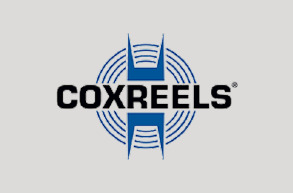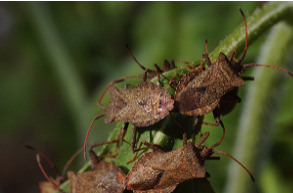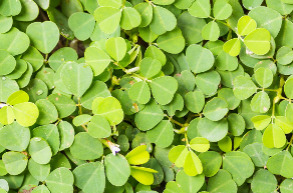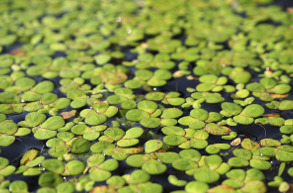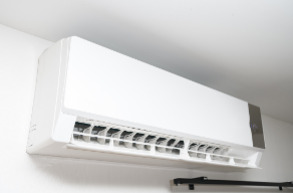Annual Bluegrass Control
Most Effective Products
Annual Bluegrass (Poa Annua) Control: How to Get Rid of Annual Bluegrass (Poa Annua)
This page is a general Annual Bluegrass (Poa Annua) control guide. By using the products and methods suggested, you will get control of annual bluegrass (Poa Annua). Follow this guide, use the recommended products, and we guarantee 100% control of annual bluegrass.
In the springtime when you start to work again on your lawn and see the grass growing, it can be an exciting feeling to know that your hard maintenance work is finally paying off. However, sometimes looks can be deceiving, as is the case when Annual Bluegrass grass shows up uninvited.
Annual Bluegrass is an annual weed commonly found in lawns and occasionally in gardens. Also known aspoa annua, this plant is native to Europe but exists worldwide. Controlling Annual Bluegrass can be tricky, mainly because this weed has the ability to produce one hundred seeds in as little as two months. These seeds can lay dormant for several years before sprouting.
Annual bluegrass is generally an issue in residential yards because of its appearance in hot weather, resulting in brown spots in lawns during the peak of summer. This weed also thrives in cool weather while most lawn grasses are dying, meaning it has the potential to invade a vulnerable lawn.
If you are dealing with Annual Bluegrass in your yard, our step-by-step DIY treatment guide will show you how to get rid of Poa Annua quickly while saving money with the help of our professional quality herbicides.
Identification

Because annual bluegrass (Poa Annua) can be mistaken for other weeds, such as creeping bentgrass, it is important to properly identify this weed to ensure total control. Here are some identifying traits to keep in mind:
- Upon first inspection, once you see green blades come up, you may feel that its the start of a beautiful lawn, but once time passes and the poa annua grass becomes thicker and taller, little white seed heads come up with it, which can make for quite an eyesore.
- Annual bluegrass has a light green color to it, with boat-shaped tips.
- Annual Bluegrass has a tall tasseled seed stalk that will typically stand above the rest of the lawn and becomes visible in late spring or early summer. While the seed stalk can be tall, if you cut it short, it will still be able to produce seeds.
- Annual bluegrass has a shallow root system and thrives in moist conditions.
Reference the image above to make sure the weed you are dealing with is annual bluegrass or Poa Annua.
Inspection

Once you have confirmed that you are dealing with Poa Annua or Annual Bluegrass, you can move on to inspection. Determine where the Annual Bluegrass is thriving and the surrounding conditions that are helping it to thrive so you know where to focus your herbicide application.
Where to Inspect
Conduct a thorough inspection of your lawn. Annual bluegrass tends to exist in areas with moist or compact soil, and areas that are somewhat shaded. Poa Annua can also be spotted in areas where grass is cut short at about 1 inch high. Poa Annua is a cool-season annual, meaning its life cycle will start in the fall and end in spring.
What to Look For
Search your lawn for pieces of grass clumped together. Annual Bluegrass has a clumping habit that can spread so you're going to find these grasses in little clumps throughout the lawn. These clumps will most likely be a light green color with boat-shaped tips.
Treatment
Please be sure that when handling any type of herbicide, you are properly protecting your skin and eyes with safety equipment. Goggles, gloves and love sleeved clothing should suffice. Annual Bluegrass germinates in the late fall or early spring, so timing is critical to being able to effectively control it.
We normally recommend to lawn owners to control Annual Bluegrass before it sprouts with a pre-emergent herbicide. This is an herbicide that will prevent the Annual Bluegrass seeds from germinating. If Annual Bluegrass or Poa Annua has already shown up on your lawn, use Blindside as a post-emergent treatment.
Step 1 - Spot Treat With Blindside

Blindside Herbicide is a post-emergent herbicide designed to control over 70 different broadleaf weeds and sedges on warm-season turfgrass, including poa annua or Annual Bluegrass.
Determine how much Blindside you will need by first measuring the square footage of your lawn. Blindside should be mixed at a rate of .075 - 0.15 per 1,000 sq. ft. on cool-season grasses and 0.15 - 0.23 per 1,000 sq. ft. for warm-season grasses. Once you get your lawn's square footage, mix the appropriate amount of Blindside in a pump sprayer with water and then shake the sprayer to mix the solution.
Once mixed, spot treat your lawn where the Annual Bluegrass is concentrated. We suggest spraying on a fan spray nozzle setting to get a nice fine even coating on the Annual Bluegrass. Herbicides will work best when the Annual Bluegrass is young and actively growing. As the weed matures, they will be more resistant to chemicals which may require repeated applications.
If all else fails, and especially when the plant is dormant, you may have to resort to non-selective herbicides like glyphosate/Roundup to eradicate the plant from your lawn but this should be regarded as a last-ditch effort.
Prevention

You can prevent the return of Annual Bluegrass after it has been controlled with cultural practices that will hinder the redevelopment of this invasive grassy weed and a pre-emergent. Our top pre-emergent recommendation is Barricade which contains prodiamine, a highly effective active ingredient that controls and prevents seeds from sprouting.
Load and Apply Barricade
Depending on your turfgrass type, Barricade can be applied at a rate from 1.5 pounds to 4 pounds per 1,000 sq. ft. Measure the square footage of your lawn to determine how much Barricade you will need. Once you have measured and calculated the area, load the appropriate amount of Barricade into a broadcast spreader at the right calibration and apply to your lawn until it is evenly spread. After broadcasting the granules, you should then water in and activate them with at least 0.5 inches of water.
Herbicides must be applied in late summer/early fall before poa germination. A second application can be applied in winter to control later germinating plants.
Additionally, you can also implement the following cultural changes to prevent Annual Bluegrass:
- Addressing areas of compacted soil and making sure the soil is not too wet is important when it comes to lessening the chances of poa annua making a comeback. Also making sure not to mow your grass too low can help.
- Be mindful of how tall your grass is when mowing the lawn. Annual bluegrass can reseed with less than an inch of grass, and surrounding it with taller grass will shorten its chances at surviving.
- Annual bluegrass tends to live around areas where soil is moist and compact. Avoid overwatering your lawn.
Key Takeaways
What is Annual Bluegrass or Poa Annua?
- Annual bluegrass, or poa annua, is a grassy weed that germinates in late summer or early fall and produces seeds in the spring.
- Annual Bluegrass can be easily recognized by it's clumping habit and tall tasseled seed stalk. It is known to frustrate yard owners with its persistence
How To Get Rid of Annual Bluegrass or Poa Annua in Your Yard
- If Annual Bluegrass is already established and growing on your lawn, we recommend a post-emergent treatment with Blindside Herbicide using a handheld pump sprayer.
- Spot treat the areas where they are prevalent, spraying to wet, but before the point of runoff.
Preventing Annual Bluegrass (Poa Annua) Reinfestation
- We recommend applying a pre-emergent to your lawn such as Barricade with a handheld sprayer in the early spring. This will prevent Annual Bluegrass seeds from growing.
- Additional measures to prevent Annual Bluegrass include avoiding overwatering of your lawn and mowing your grass too short.
- Proper lawn care maintenance that addresses soil compaction, drainage issues and nitrogen rates will be important to keep your turf strong and choke out Poa Annua.























































